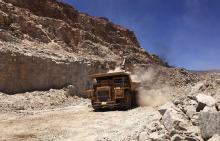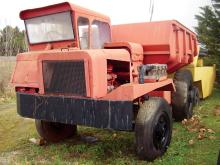
Electric drives still provide worthy competition to mechanical drives in the rigid truck sector. ABE takes a look at the history
In the rigid chassis truck sector, there has long been a rivalry between the mechanical and electric driveline concepts. The origins of diesel-electric trucks go back many years and these were developed as a solution to the shortcomings of early mechanical drivelines, which suffered reliability issues.
Early failures of gearboxes, differentials, driveshafts and halfshafts resulted in many on-highway trucks grinding to a halt. Chain drives were also used on some on-highway trucks, although these could hardly be described as having offered a low maintenance alternative. As an alternative to mechanical transmissions, some firms opted to use DC wheel drives instead and these became a not uncommon sight from the late 1920s on.
Diesel electric trucks do offer benefits in certain applications. From rest they move off more progressively, which can help reduce tyre wear and driveline maintenance costs. On a downhill run the driver uses retardation from the electric drives to slow the machine instead of the service brakes, further cutting maintenance costs when compared with a mechanically-driven machine.
Given the tough working environment encountered by off-highway rigid trucks used in construction, quarrying and mining applications, it was a logical move to introduce electric rear drive to this market. US firm Dart built a diesel electric tractor unit that was used to haul coal in 1939 and RG LeTourneau developed the TR60 prototype electric drive hauler in the late 1950s and although this was put to work, its design was perhaps too radical to achieve market acceptance.
Shortly after,
However, the development of mechanical drives continued at Cat. In the 135tonne payload class, Cat's 785 truck proved highly successful following its introduction in the mid 1980s and began to account for an increasingly large percentage of sales in this particular market segment. Other manufacturers took note of how market demand was shifting to mechanical drive. Only Belaz and
The development of the sophisticated diesel electric AC drive for
Further down the size range though, Cat, Hitachi and Komatsu have continued with using mechanical drives for their 135tonne haulers class machines. However the Belaz 75131/75132 models and Unit Rig's MT3300AC are 136tonne payload trucks with AC drives and some customers still favour this configuration. Where large trucks are used on quarries with long descents, the benefits of electric retardation are likely to be apparent as these could offer lower maintenance needs in comparison with the braking systems on mechanical drive trucks. And some customers are likely to continue to buy machines such as the Belaz or Unit Rig units, feeling that these offer benefits over the more commonly seen mechanical drive trucks.











